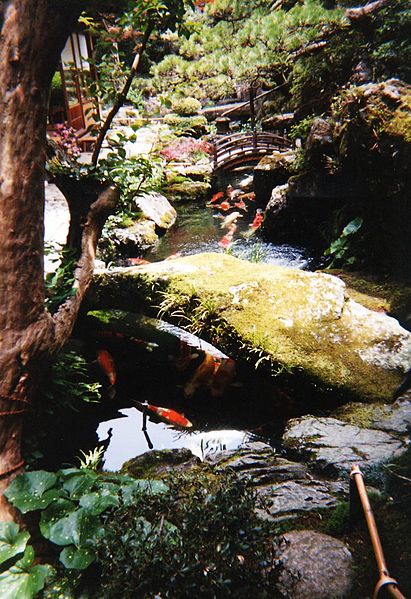Hello, Frank Indiviglio here. As fall arrives in the temperate zone, outdoor koi ponds will need some attention if all is to go well when the temperatures drop.
Basic Considerations
 The metabolisms of both koi and the various bacteria that occupy the pond and filter slow down as temperatures fall. Your fish will not be as hungry as usual, and leftover food will not decompose as quickly as in the summer. Dead plants and other organic material in the pond may also remain more or less “intact” through fall and winter.
The metabolisms of both koi and the various bacteria that occupy the pond and filter slow down as temperatures fall. Your fish will not be as hungry as usual, and leftover food will not decompose as quickly as in the summer. Dead plants and other organic material in the pond may also remain more or less “intact” through fall and winter.
However, don’t be fooled by the relative “quietness” of this time….as temperatures rise in the spring, decomposition will begin and the resultant ammonia spike may kill your fishes. Therefore, take care to be extra vigilant in removing organic detritus from your pond as fall approaches.
Cleaning
Be sure that your pond filter is in good shape and running well…rinse or replace filter media and continue with routine backwashes.
If necessary, install a leaf cover or net. This is not merely an aesthetic consideration…decomposing leaves will rob water of oxygen, lower the pH and increase the ammonia level.
To control the amount of dead plant material that enters the pond, remove any aquatic or emergent plants that will not survive the winter.
Health Checks
It is especially important that your koi be in good health as the weather changes. Immune systems will be stressed by the falling temperatures, leaving the fishes open to illness and parasitic infection. Bacteria and fungi that are ever present, and may be of little concern to healthy fishes, will prove dangerous to those not in the peak of condition during the fall and winter.
Feeding
As fall progresses, switch your koi from high protein pellets to more easily digested foods or wheat germ based pellets designed for use in cool water. Do not feed your fishes when temperatures drop below 52 F.
Temperature
Make sure that heaters or surface de-icers, if required, are in good working order. If you utilize a heater, set its thermostat for 62 F. Koi will feed lightly at this temperature, but keep an eye out for leftovers. In unheated ponds, cease feeding at 51 F.
Further Reading
For optimistic readers already thinking spring’s arrival, please see our article Koi, a Matter of Extremes in Spring.
Please check out our koi and outdoor pond books for further information.
For interesting forum comments and photos dealing with overwintering koi under extreme weather conditions, please see the forum at koi-bito.com.
Please write in with your questions and comments.
Thanks, until next time,
Frank Indiviglio
Japanese water garden image referenced from wikipedia and originally posted by Solipsist
 That Fish Blog – Aquarium Advice and Information
That Fish Blog – Aquarium Advice and Information


I feel like this could’ve been more thorough?
Thank you for the feedback, Bill. We are always looking to improve our content. What areas would you like to see covered in more detail or do you still have questions about based on this article? We also have another similar article on our website’s Article Archive on Pond Winterization.